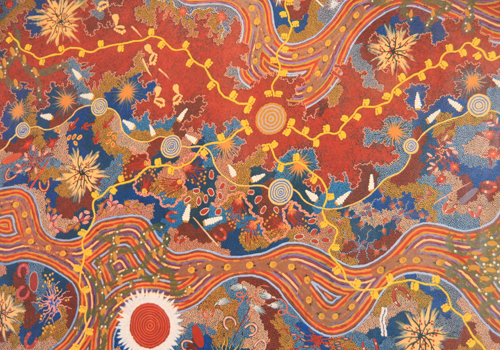
The Australian Aboriginal culture is around 60, 000 - 80,000 years old, making it the longest surviving culture in human history and the longest running art culture. This has been proven thanks to the rock art that shows evidence of Aboriginal culture dating back over 30,000 years.
A large portion of contemporary Aboriginal art is based on significant ancient stories and symbols based on 'the Dreamtime' – the period in which Indigenous people believed that the world was made. The Dreamtime stories are up to and possibly even exceeding 50,000 years old, and have been handed down through the generations for all those years.
Since the Australian Aboriginal people have no written language of their own, their important stories are based on the traditional symbols and information in the artwork, which go hand in hand with recounted stories, song or dance, which help pass on important information and preserve their culture.
Australia has always been multicultural. Prior to the arrival of Europeans, there were many different language groups and many different cultural ways, which is why it is not a surprise that different regions have different artistic styles and use different artistic media today!
Interestingly, traditional Aboriginal artists cannot paint a story that does not belong to them through family lineage. The colours used in Aboriginal art were originally sourced from local materials. Black was taken from charcoal, ochre or iron clay pigments were used for red, yellow and white. In 1971, when the modern desert art movement began, these four colours made up the basis of the artists' colour range, referring back to traditional role of art in ceremony, sand painting, body painting, story-telling and teaching. Other naturalistic colours were adopted –saltbush mauves, sage greens and smoke greys. During the middle of the 1980s, with more Aboriginal women artists, a range of modern colours were picked by the artists, and bright desert paintings came into the market. Today, a majority of successful Aboriginal artists are women. Till date, the choice of colours continue to be an identifier of the styles for some communities – Papunya Tula chooses soft earth colours while Western Desert communities pick strong primary colours.
Hope you liked reading about this interesting art and culture revolving around Aboriginal art!